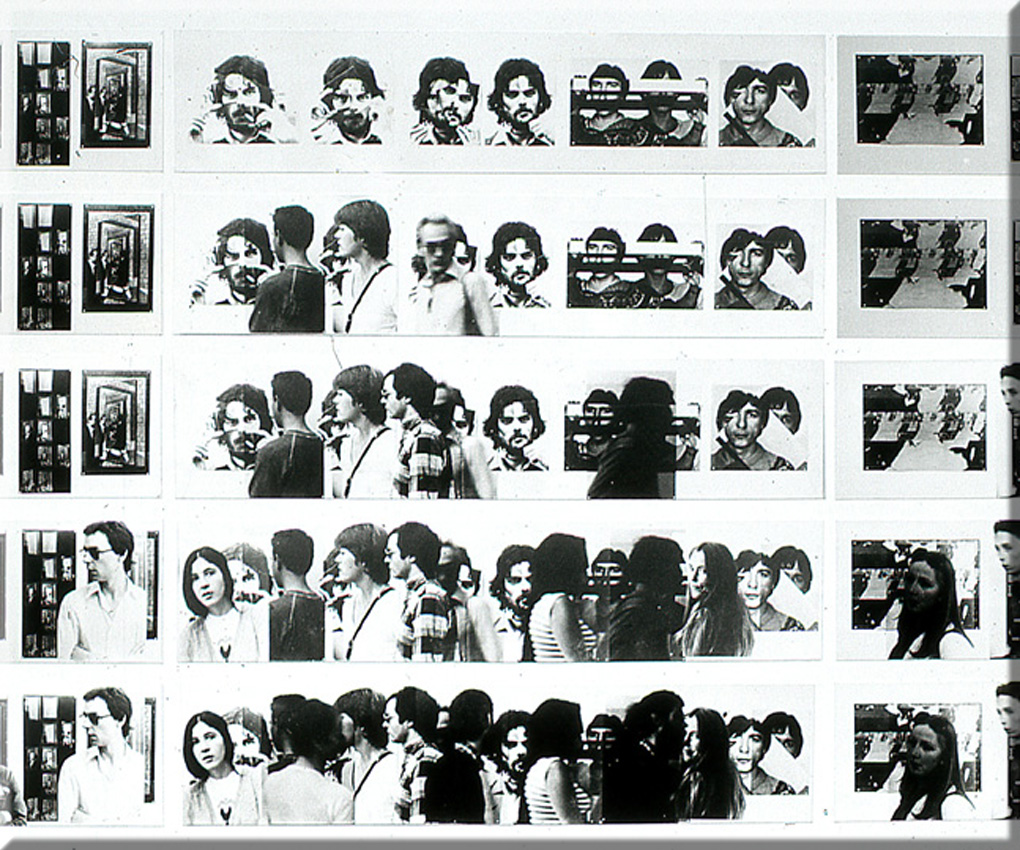AIR Gallery – Public images
1978
The exhibition at the AIR Gallery, London started with photos of previous work pinned to the walls. In the centre of the room was a large black structure with viewing holes in each side, from which photos were taken of the people visiting the exhibition. Selected photos were printed to life-size and fixed to the walls, progressively covering the original work with images of those that had come to see it.
One wall of the exhibition space consisted of a large display window, giving views to and from Shaftesbury Avenue. This surface was gridded with fine lines to give a reference scale and photos taken through the window were printed on transparent film and attached to the glass. These views of the outside ‘pinned’ to the glass wall could be viewed from inside the gallery against the background of the street, but also in reverse from outside where they coincided with the reflections of the view in the window.
This piece was not just about creating the composite image of the crowd, who never actually met each other, but also about the viewers’ awareness of and reactions to the imminent possibility of being photographed, whether these reactions were recorded or not.
In order to maximise this tension a tape loop produced the intermittent sound of a camera shutter being released from inside the structure and all the ‘portholes’ had pictures of a camera lens viewable from the room. This had the effect of masking when and from where actual shots were taken. Even more importantly, it created a permanent presence in the space, even when there was no one inside actually taking photos.
AIR Gallery – Public images
1978
The exhibition started with photos of previous work pinned to the walls. In the centre of the room was a large black structure with viewing holes in each side, from which photos were taken of the people visiting the exhibition.
Selected photos were printed to life-size and fixed to the walls, progressively covering the original work with images of those that had come to see it.
This piece was not just about creating the composite image of the crowd, who never actually met each other, but also about the viewers’ awareness of and reactions to the imminent possibility of being photographed, whether these reactions were recorded or not.
In order to maximise this tension a tape loop produced the intermittent sound of a camera shutter being released from inside the structure and all the ‘portholes’ had pictures of a camera lens viewable from the room. This had the effect of masking when and from where actual shots were taken. Even more importantly, it created a permanent presence in the space, even when there was no one inside actually taking photos.














